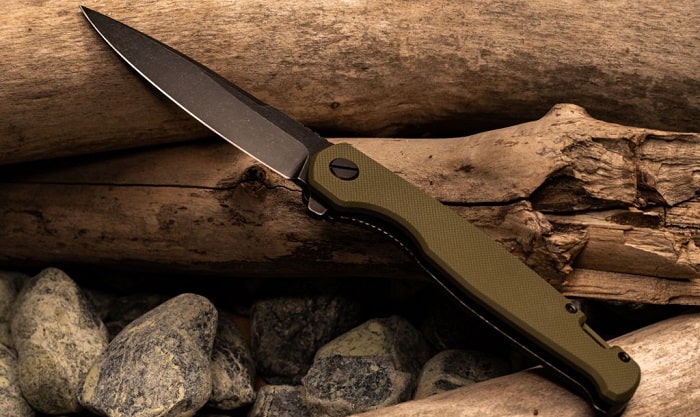For kitchen professionals, a knife isn't just a toolit's an extension of their hand. The folding knife handle ergonomics plays a crucial role in ensuring efficiency and comfort during prolonged use. The way a knife feels in hand can significantly impact performance, leading to a seamless culinary experience.
When we talk about folding knife handle ergonomics, we refer to the design aspects that ensure a comfortable grip, reducing strain and preventing injuries. This is especially vital for chefs who spend hours slicing, dicing, and carving. The right handle can enhance control, provide stability, and ultimately improve the quality of the cuts.

Key Elements of Ergonomic Knife Handles
Material Matters
The material of the knife handle is foundational to its ergonomic design. Common materials include wood, plastic, and metal, each offering distinct advantages. For instance, wood provides a traditional feel with a natural grip, while plastic and metal offer durability and are often easier to clean. A detailed exploration of wood handle folding knives can provide further insights into why wood remains a popular choice among professionals.
Shape and Contouring
The shape of the handle affects how the knife sits in the hand. Contoured handles are designed to fit the natural curves of the hand, offering better comfort and preventing slippage. This is particularly important for bone handle folding knives, which require precise handling due to their unique material properties.
Balance and Weight
A well-balanced knife ensures that the weight is appropriately distributed between the blade and the handle, reducing fatigue. The balance point of a knife should ideally be at the bolster, allowing for easy maneuverability. Understanding the dynamics of washer vs bearing pivots can provide additional insights into achieving optimal balance.
Why Ergonomics Matter for Kitchen Professionals
For those in the culinary field, knife handle ergonomics isn't just about comfortit's about safety and efficiency. A poorly designed handle can lead to cuts, carpal tunnel syndrome, and other repetitive strain injuries. By investing in knives with ergonomic handles, chefs can protect their health and enhance their culinary prowess.
Moreover, the right ergonomic design can improve cutting precision. This is crucial when dealing with delicate tasks such as filleting fish. For those interested, learning how to fillet a fish without a fillet knife can be an eye-opener on the importance of having the right tool for finesse.
Choosing the Right Ergonomic Knife Handle
Testing for Comfort
Before purchasing a knife, it's essential to test it for comfort. Hold the knife in your hand and simulate cutting motions. This will give you a sense of how the knife feels and whether it will be comfortable during extended use. The grip should feel natural, without any pressure points.
Consider the Task
Different tasks require different types of knives. A chef's knife may demand a different grip style than a paring knife. It's crucial to choose a knife handle that complements the primary tasks you perform. Exploring various types of knives will help you understand which handles suit specific culinary techniques.
Conclusion
The world of folding knife handle ergonomics is vast and nuanced, especially for kitchen professionals who rely on precision and comfort in their daily tasks. By understanding and choosing the right ergonomic designs, chefs can not only enhance their performance but also safeguard their well-being. As you explore the multitude of options available, remember that the perfect knife is one that feels like an extension of your hand, tailored to your unique needs and preferences.

Frequently Asked Questions
What is the best material for knife handles?
The best material depends on personal preference and intended use. Wood offers a natural feel, plastic is durable and easy to clean, and metal provides strength and longevity.
How does handle design affect knife usage?
Handle design impacts comfort, control, and safety. An ergonomic design reduces strain and enhances precision during use.
Why is balance important in knife design?
Balance ensures even weight distribution, reducing fatigue and enhancing control, making it easier to perform precise cuts.
This article contains affiliate links. We may earn a commission at no extra cost to you.


























